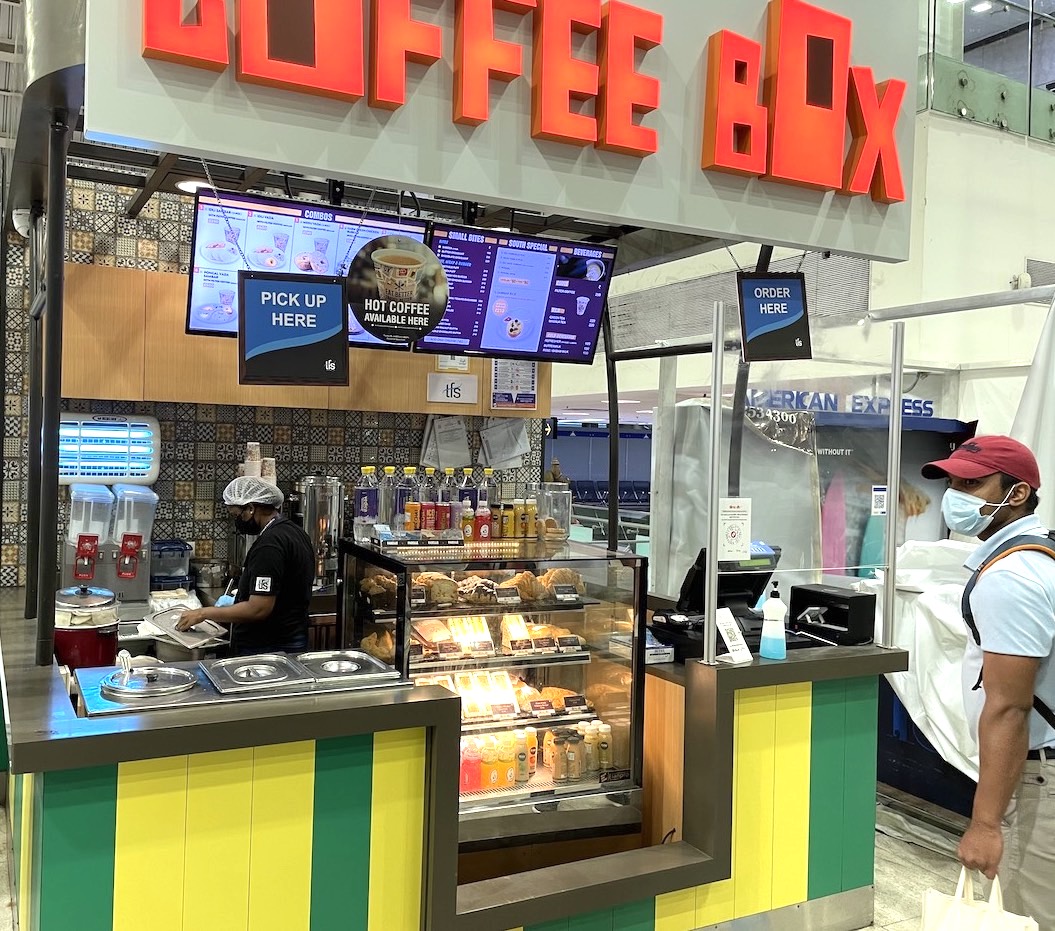INDIA. In the latest of a series of articles about travel retail and aviation in India, industry expert Shriram Sanjeevi explores the subject of the balance between food & beverage and retail stores in Indian airports. He sets out the reasons why small F&B outlets tend to dominate and makes recommendations on retail concepts that have the potential to succeed in the nation’s airport environment.
It is quite common to see F&B outlets flourish within the domestic departures zones at Indian airports, but less so in the case of product retail stores such as those selling men’s or women’s apparel and kids’ toys for example.
Internationally it is quite common to see stores selling cosmetics and fragrances for both genders. Book stores are a big hit globally at airports, but not so much in India. The dominance of food outlets is unmistakable. Even bars and pubs are few and far between, unlike what we see at many international airports. Ever wondered why?
To begin with, most retailers in Indian airports have been more comfortable feeding the tummy than the ego of passengers (read: customers). Save for the sprawling retail areas of Bangalore International Airport as well as T2 at Mumbai and T3 at Delhi (and I refer to the domestic departures at all these airports), no other airport boasts a reasonably spread retail area.

The reasons for this are that Bangalore began with 20,000sq ft of (product) retail space way back in 2008 when it opened the new greenfield airport. At the time, Delhi’s domestic terminal was a makeshift enterprise, yet, they created a neat 15,000sq ft retail area, with a lesser F&B offering. The other 120 airports spread across India have little noteworthy to mention when it comes to retail outlets.
Apart from legacy spread over 15 years, the other reasons not to focus on retail shops are multi-fold.
To begin with, Indian customers are extremely choosy and wish to see a wider selection before they decide to buy a product, be it a shirt or a pair of denims, even sunglasses and luggage, including laptop bags and travel cases.
To match the customer’s thirst for choice, the retailers need to hold sizeable inventory, which requires a larger operating area.

Commensurate to that, the rentals are way too high and are in imbalance with the revenues or ROI. For example, a food outlet measuring 100sq ft (perhaps a coffee shop which also offers takeaway food) could earn up to Rs30,000 (US$367) per day in mid-size airports.
The operating margins in F&B are far higher than in product retail. Therefore, an outlet selling sunglasses or shirts can never achieve that level of sales and ROI in a 100sq ft area.
Another reason is the prevalence of local market retail stores across the country. It is estimated that there are 12 million shops of various shapes and sizes in India, with more than 50% of customers having access to such stores within a 30-minute travel time from their homes.
Therefore, there is absolutely nothing novel for travellers to shop for at airports. With the increase in mall culture in India, especially with mall visits being a family outing during weekends, any tendency to shop at airports is undeveloped.
Ecommerce in the past six to seven years has also dented the opportunity for airport retail, especially for those travelling to/from Tier 2/3 towns. Earlier, they had to come to a nearest Metro city such as Mumbai or New Delhi to shop for their favourite items.

Thanks to funding from global companies and private equity funds, the likes of Amazon and Flipkart (owned by Walmart) today reach most of the addressable Postal Index Number (PIN) codes in India. To top it off, these ecommerce companies also offer a return policy, should the customer not like the product for whatever reason.
For someone travelling to a city such as Bhubaneswar (considered Tier 2) in the eastern state of Orissa, ecommerce is a boon. Add to that, a town such as this with a population of less than 20 lakh (2 million) people has three malls with a cumulative trading area of over 1.5 million sq ft.
What’s surprising is a category like books and magazines, one of the earliest and favourite sectors to shop at airports, is hardly present today in smaller airports. The competition for bookstores in the present age comes from electronic gadgets including laptops, tablet devices and the ubiquitous mobile phone.

The essence of reading is now taken over by ‘viewing’. Sometimes, the enemy doesn’t even have a formidable shape and this is such an example.
One area where retail can perhaps do well is concept stores selling fragrances and grooming essentials for men. With a significantly higher disposable income, certain travellers do not mind indulging in some personal therapy while travelling. Men of diverse age groups want to massage their own egos with a quiet and quick shop for these personalised items.
Though these are available in nearby retail stores as well as online, I believe these products have the highest impulse factor, especially for male customers who represent more than 75% of the entire travelling public.
Other than this, standalone liquor stores are popular at Delhi, Bangalore and Mumbai airports in the domestic arrivals, which stock internationally acclaimed brands. I have always wondered why this could not be the case in smaller airports as well, with airports set in places where many of these brands are not available otherwise.
Guilty husband/father/son is another area through which retailers could fill the gap. From incensed candles to women’s lingerie, branded and unbranded toys are a great opportunity at both departures and arrivals for domestic passengers. I hope to see this take shape in the near future.
Note: The Moodie Davitt Report publishes the FAB Newsletter, which features highlights of openings, events and campaigns from around the world of airport and travel dining.
Please email Kristyn@MoodieDavittReport.com to subscribe.











